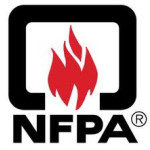- Industria: Fire safety
- Number of terms: 98780
- Number of blossaries: 0
- Company Profile:
Established in 1896, NFPA's mission is to reduce the worldwide burden of fire and other hazards on the quality of life by providing and advocating consensus codes and standards, research, training, and education.
Space designed for human occupancy as living space for persons aboard a vessel.
Industry:Fire safety
Solution produced by introducing a measured amount of foam concentrate into a given amount of water in a storage tank.
Industry:Fire safety
Solid-shaped hull mated with a flexible multicompartment buoyancy tube(s) at the gunwale.
Industry:Fire safety
Solid-piled, palletized, rack storage, bin box, and shelf storage in excess of 12 ft (3. 7 m) in height.
Industry:Fire safety
Solid shelving is fixed in place, slatted, wire mesh or other type of shelves located within racks. The area of a solid shelf is defined by perimeter aisle or flue space on all four sides. Solid shelves having an area equal to or less than 20 ft2 (1. 9 m2) shall be defined as open racks. Shelves of wire mesh, slates, or other materials more than 50 percent open and where the flue spaces are maintained shall be defined as open racks.
Industry:Fire safety
Solid waste materials consisting of commonly occurring residential and light commercial waste.
Industry:Fire safety
Solid propellants, commonly referred to as smokeless powders, used in small arms ammunition, cannons, rockets, or propellant-actuated devices.
Industry:Fire safety
Solid materials in powder or granular form designed to extinguish Class D combustible metal fires by crusting, smothering, or heat-transferring means.
Industry:Fire safety
Solid fuels such as municipal solid waste (MSW), refuse derived fuel (RDF), biomass, rubber tires, and other combustibles that are used instead of fossil fuels (gas, oil, or coal) in a boiler to produce steam for the generation of electrical energy.
Industry:Fire safety
Solid fuel that is reduced to a size such that at least 50 percent will pass through a 200-mesh (74 microns) sieve.
Industry:Fire safety
